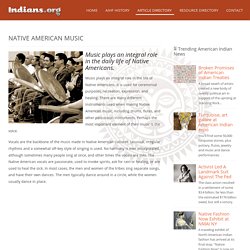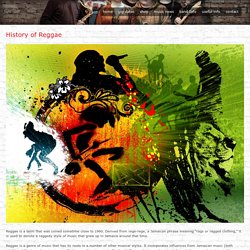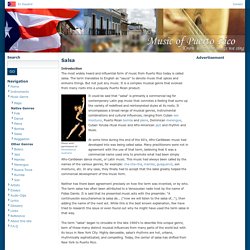

Nakai: Earth Spirit - Native American Music. Native American music and culture. Music plays an integral role in the daily life of Native Americans.

Music plays an integral role in the life of Native Americans. It is used for ceremonial purposes, recreation, expression, and healing. There are many different instruments used when making Native American music, including drums, flutes, and other percussion instruments. Perhaps the most important element of their music is the voice. Vocals are the backbone of the music made in Native American cultures.
Many researchers feel that Native American music is some of the most complex ever performed. Related Stories: Native American Music Share This Page with Your Friends. History of Reggae. Reggae is a term that was coined sometime close to 1960.

Derived from rege-rege, a Jamaican phrase meaning “rags or ragged clothing,” it is used to denote a raggedy style of music that grew up in Jamaica around that time. Reggae is a genre of music that has its roots in a number of other musical styles. It incorporates influences from Jamaican music (both traditional Mento and contemporary Ska), as well as American Rhythm & Blues, which was broadcast from high-powered stations in New Orleans and Florida in the early days of radio, and could be easily picked up in Jamaica. Reggae’s closest musical relations are Ska and Rocksteady, popular in Jamaica during the 1950s and early 1960s. Reggae evolved from these other genres, really coming into its own later that decade. Reggae shares many characteristics with Ska, such as a walking bass line with guitar and piano off-beats, but Ska is faster paced and also tends to incorporates jazz-influenced horn riffs. Al Francis - Reggae Music, Rastafari Music, Cultural Music, Roots Reggae, Conscious Music, Spiritual Music, Peace.
Music Genre: Salsa - Music of Puerto Rico. Introduction The most widely heard and influential form of music from Puerto Rico today is called salsa.

The term translates to English as "sauce" to denote music that spices and enlivens things. But not just any music. It is a complex musical genre that evolved from many roots into a uniquely Puerto Rican product. It could be said that "salsa" is primarily a commercial tag for contemporary Latin pop music that connotes a feeling that sums up the variety of redefined and reinterpreted styles at its roots. It encompasses a broad range of musical genres, instrumental combinations and cultural influences, ranging from Cuban son montuno, Puerto Rican bomba and plena, Dominican merengue, Cuban Yoruba ritual music and Afro-American jazz and rhythm and blues.
At some time during the end of the 60's, Afro-Caribbean music had developed into was being called salsa. Neither has there been agreement precisely on how the term was invented, or by who. Salsa Music Video Mix Vol 1. The Roots of Tejano and Conjunto Music. Arhoolie RecordsMusic Excerpts, Liner Notes, and Photos All music excerpts, liner notes, and photos on this page are the property of: Arhoolie Records, 10341 San Pablo Av., El Cerrito, CA 94530 The roots of Tejano and Conjunto music are as widespread and diverse, and run as deep, as the traditions, cultures and people which gave them life.

BETO VILLA LOS POPULARES DE NUEVA ROSITA. Cajun and Zydeco Music Traditions. By Barry J.

Ancelet Cajun music and zydeco are closely related parallel music forms. Cajun music is the music of the white Cajuns of south Louisiana, while zydeco is the music of the black Creoles of the same region. Both share common origins and influences, and there is much overlap in the repertoire and style of each. At the same time, each culture proudly and carefully preserves the identity of its own musical expression. Excerpt, J'ai Ete Au Bal: Cajun and Zydeco Music of Louisiana. Cajun music is a blend of the cultural ingredients found in south Louisiana. 'Tit galop pour Mamou performed by Steve Riley and the Mamou Playboys. The violin, which was a popular new instrument in France during the 17th century when the French left for the New World, continued to dominate the instrumental tradition until German Jewish merchants on the south Louisiana prairies began importing diatonic accordions from Austria in the early 19th century.
Chris Ardoin. Geno Delafose. Willis Prudhomme. Ijrcs2 1 ayling. Old School 2011 International Barbershop Quartet Champions.